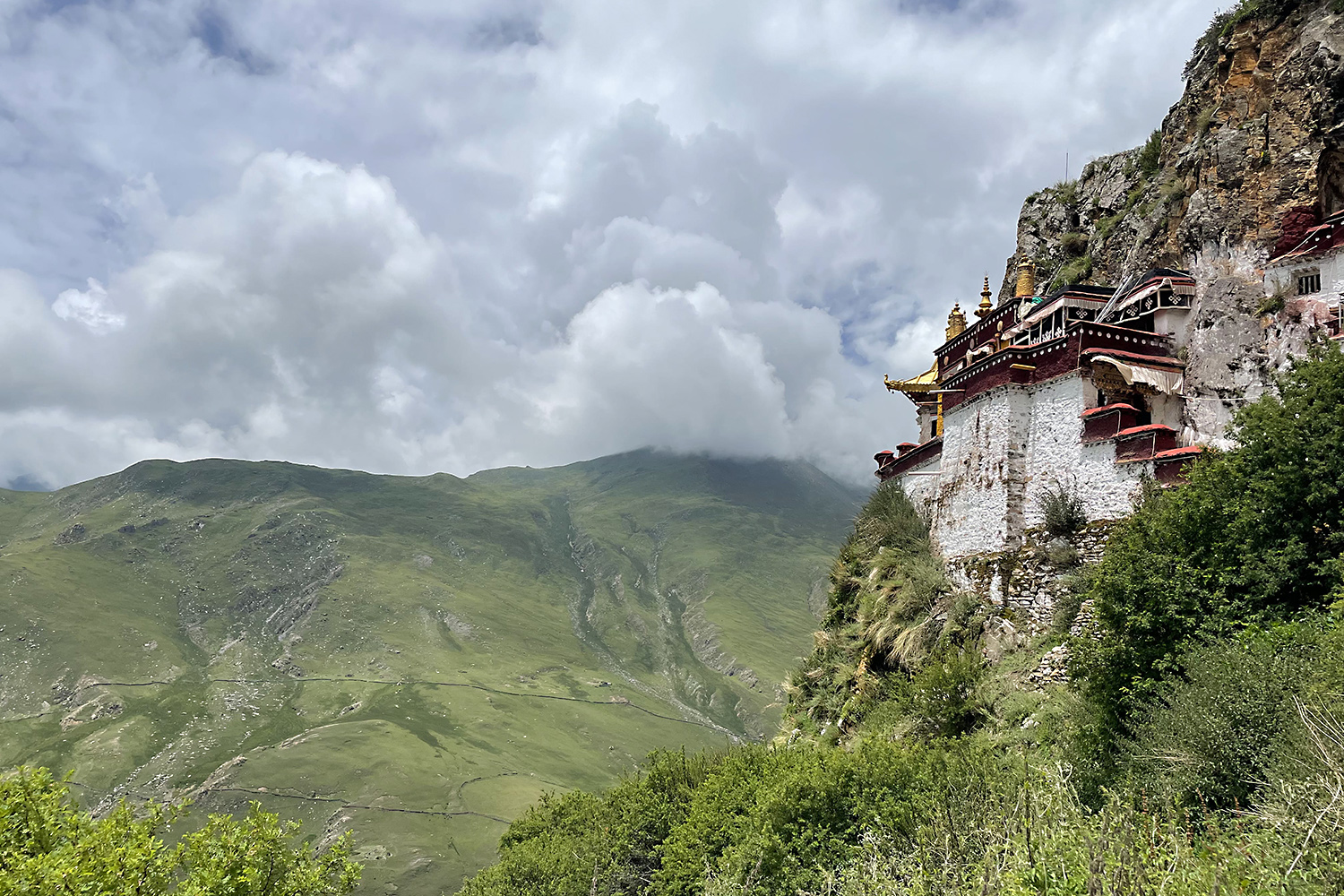Living with Yak Herders in Tibet Part 1: Arriving in Lhasa and Encountering pilgrims
At 4,800 metres above sea level, doctoral student Siran Liang from the Institute for Geosystems and Bioindication (IGeo) at TU Braunschweig spent four months on her research. As part of the international DFG Research Training Group TransTiP (GRK 2309), she lived in a Tibetan village with a yak-owning community in Changtang. Here she investigated how yak herders experience climate change and the world shared with the yaks. For this, she immersed herself as an ethnographer in the everyday life of the people for a longer period of time. This is called participant observation or “deep hanging out”. She writes about her experiences in a logbook.
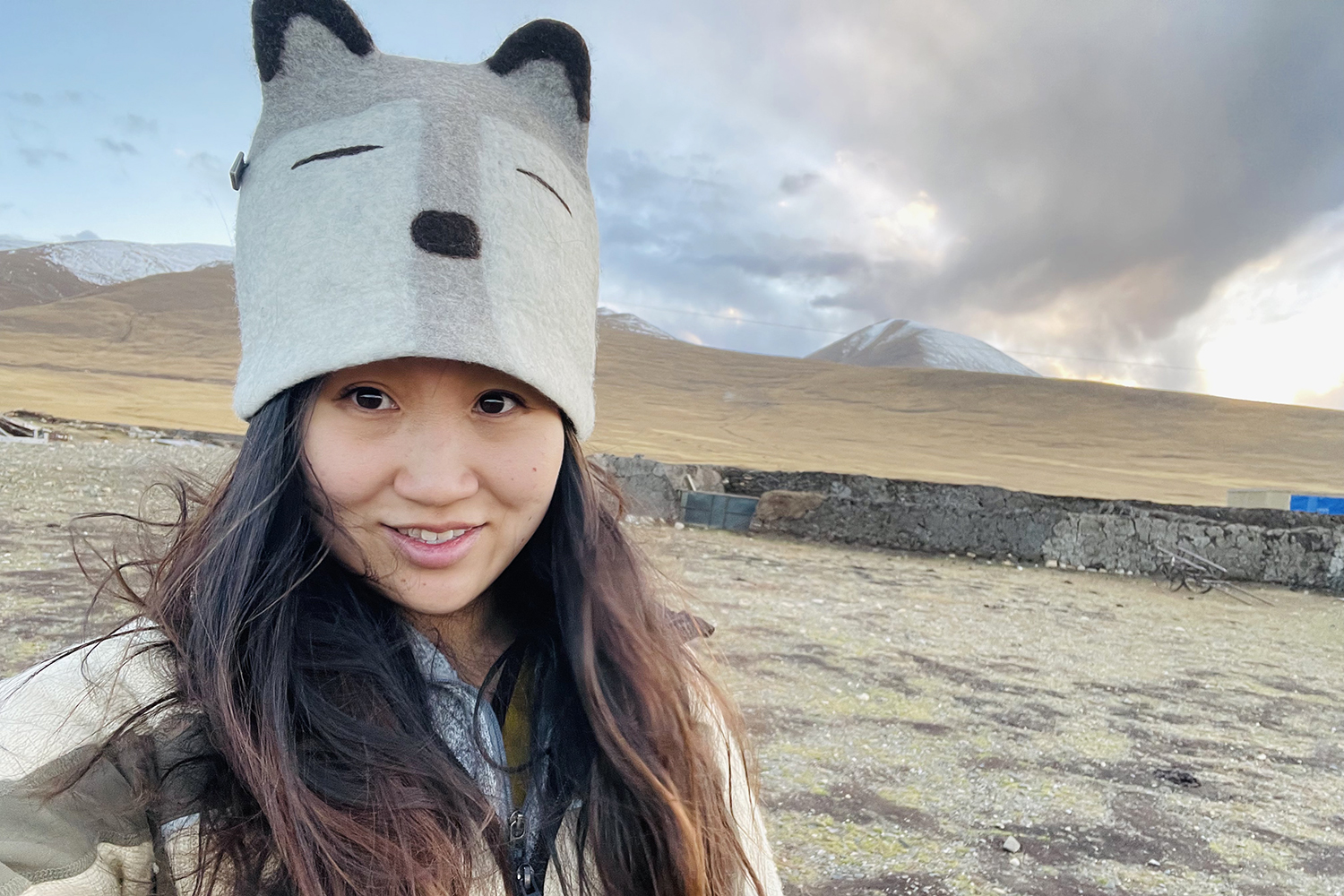
Doctoral student Siran Liang lived for four months in a Tibetan village at 4,800 metres above sea level. Picture credits: Siran Liang/TU Braunschweig
I am Siran Liang and started my doctoral research at the Institute of Geosystems and Bioindication in 2021. The centerpiece of my study is a 4-month ethnographic fieldwork in Tibetan villages, which started in July 2021. Before rushing to my field site – Changtang grassland (4800 m), I first spent several days in Lhasa (3600 m) to acclimatize to the height and visited monasteries, where I met and accompanied interesting pilgrims.
The old town of Lhasa had its distinctive scent – thin air blended with incense and butter lamp smell. Tibetan pilgrims often twirl prayer wheels and count prayer mala in hand while circumambulating Jokhang monastery in the city center.
Lhasa was especially busy in summer’s early mornings. Jeeps drove off from hotels carrying tourists who had been longing for the spectacular sceneries on this highland. And short distance buses took pilgrims coming from all over Tibet to the nearby monasteries. At that time, major streets were decorated with red slogan banner from Chinese Communist Party (CCP) to celebrate the 100th anniversary of the CCP.
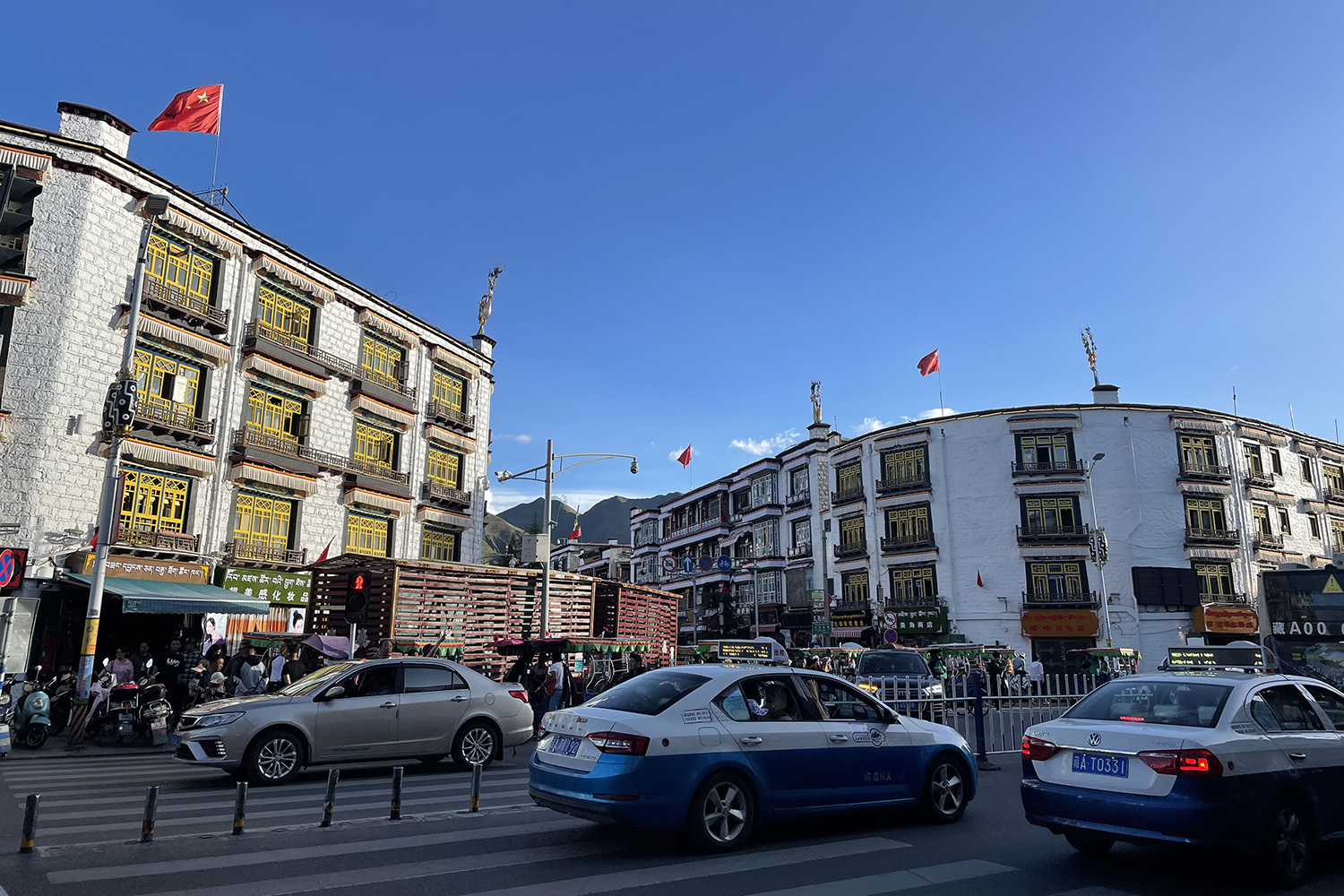
East Beijing Road, a main street in the Lhasa city center. Picture credits: Siran Liang/TU Braunschweig
A few days after my arrival, I decided to visit Drepung monastery. Buddhist pilgrims can earn religious merit by circumambulating religious sites in a clockwise direction on the kora (the circumambulation route). But among the younger generation, it has also become increasingly popular as a social activity. Thus, young couples meet on a date to circumambulate monasteries. When I started my walk on the circumambulating route, a Tibetan man walked past me with light feet. I envied him. After a while, I saw him sitting on the wall. I took a panorama photo. He was also in the photograph, but now had two heads. I found this very amusing and showed it to him. He laughed and we started to chat in Tibetan.
Quite naturally, we did our little trip in Drepung together. His name was Dondrup and he was a herder from a village near to Shigatse, 300 km west of Lhasa. He was very polite and a bit shy. He talked quietly and sometimes he showed me a wide smile. When I talked, he listened to me very carefully. I got to know that he has two daughters and around one hundred yaks. He came to Lhasa to do his driving exam, as he plans to travel around in Tibet in the future. During our walk, he often stopped and smelled the plants and told me their names. This was his fourth time visiting Drepung.
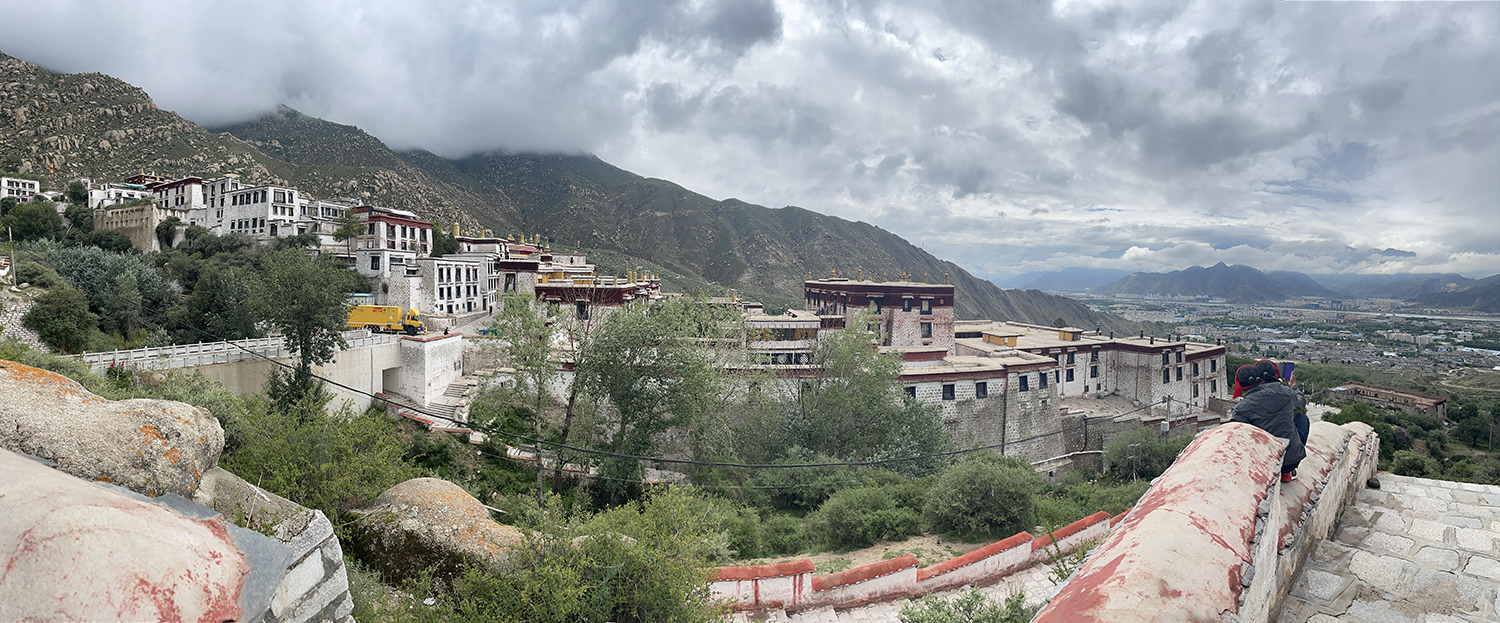
Dondrup with two heads in a panorama photo at Drepung Monastery. Picture credits: Siran Liang/TU Braunschweig
Following Dondrup in the monastery felt like treasure hunting. For example, in one of the monastery rooms, he gave me a small plastic bag and told me we will get something later. I followed him to another room, where he walked towards a monk sitting in a corner. Dondrup bowed to the monk. Without verbal communication, the monk reached his hand underneath a pile a stuff and took a handful of red barley and gave it to both of us. Dondrup told me this red barley will bring good luck.
Some days later I took a short distance bus which took a group of randomly assembled people from Lhasa to three monasteries, Ganden, Drak Yerpa and Sange. The bus was already full when I arrived, so in order to take me with them, the driver made a seat for me out of an empty bucket and a cushion. If there was a hard break, I don’t doubt I will be the first one who got thrown out of the window. Besides me, everyone in this group was pilgrim. There was a big family from Qinghai province, a father and daughter from Gannan, and an elder couple from Shigatse.
Our journey started at 6:45 in the morning, on the way to the monasteries, people recited Buddhist script. Everyone was very kind to me and took care of me in one way or another. They accompanied me when circumambulating the monasteries and shared their home-made food with me. Drak Yerpa monastery was especially impressive, as it was built into the cliffs.
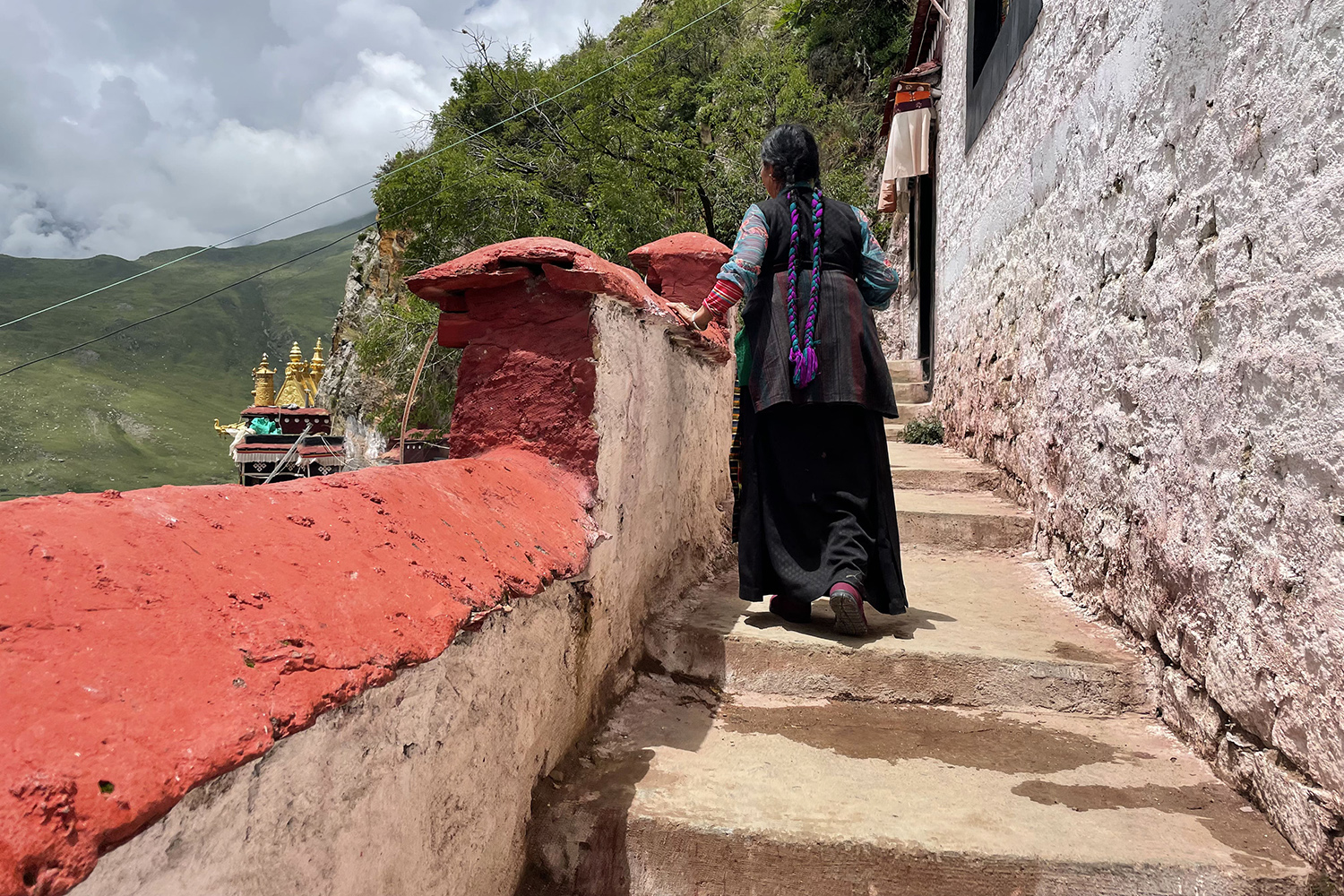
“I followed this elder lady to circumambulate the monasteries. She taught me what to see and the way to drink sacred water from the mountains.” Picture credits: Siran Liang/TU Braunschweig
During the visit, the Qinghai family asked me whether I understood what an elder lady was praying for. I said no. They explained to me: “She is not praying for herself. She is praying for all beings in the world. You know, there is not only humans in the world. There are many other living beings.”

